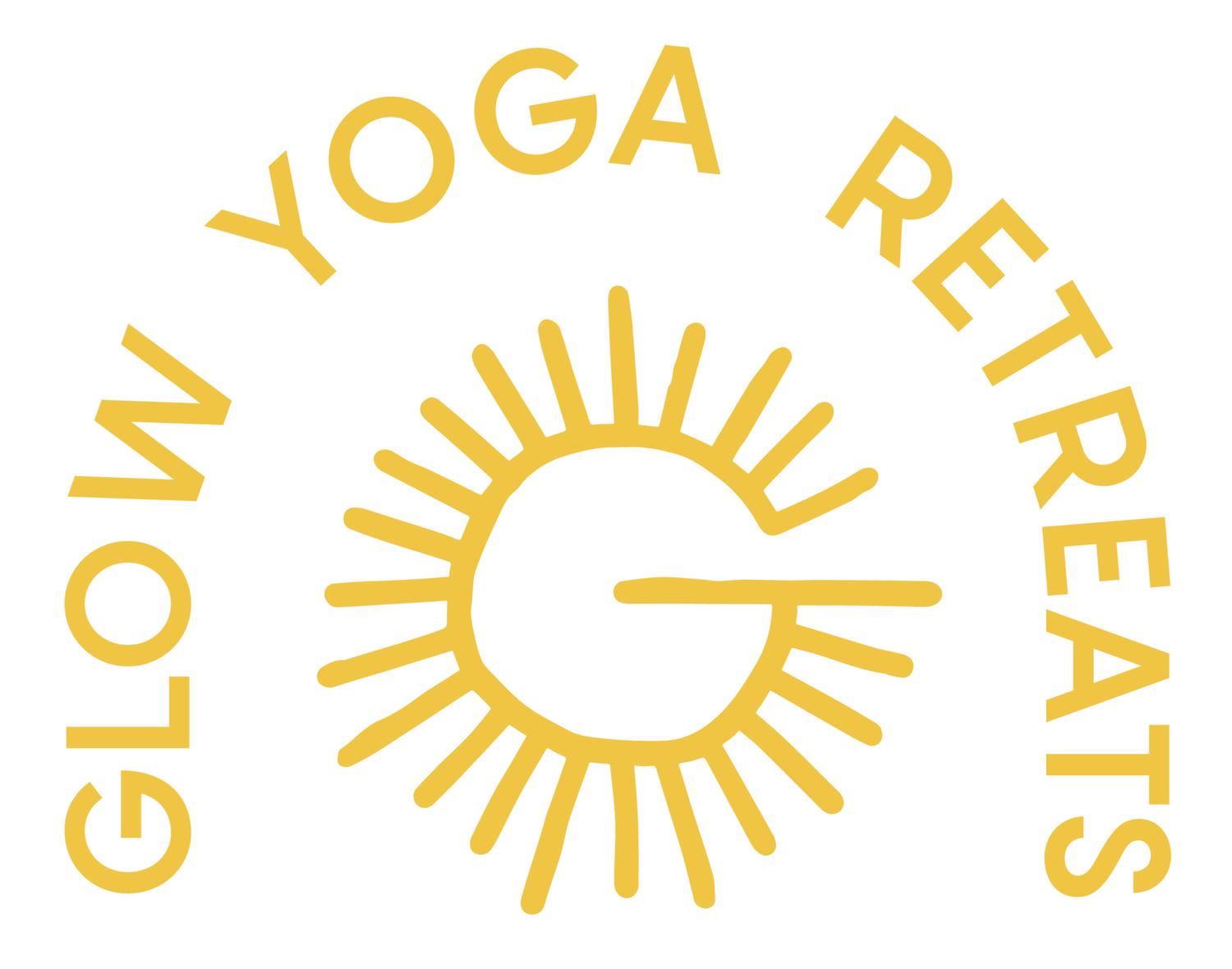How To Write Your Own Yoga Teacher Training (YTT) Manual
If you’re reading this, that probably means you’re getting ready to take the HUGE step in creating your own YTT. Yay! Congrats 🙂 I have to start off by saying that this is a massive feat, and deserves a moment of pause to notice how far you’ve come since your newbie days of teaching. Now, we dive into the work of it. Because, let me tell you, it is WORK.
For me, it felt important to let my YTT come through me, rather than to force it out. After becoming a top performing teacher on Alo Moves in 2019, there was a high volume of requests for me to create my own YTT program, as students from around the world were exposed to my teaching, and wanted to learn more in-depth with me. As flattering as this was, I still wasn’t in a place to know exactly what I wanted to say, or how to articulate my distinct style, beliefs, or practices. Similar to any creation process for me, I knew i COULD push it through and come up with SOMETHING. But if I didn’t have to, then why force it? So, I waited to see if IF it would come through me. Knowing full well that teaching YTTs might not be in my future at all. And then one day, in 2021, it did. It came through hard, and fast, and I holed myself up in our tiny (extremely hot) little yellow house rental in Northern Nicaragua and wrote and wrote and wrote until every last drop of it was out of me. Honestly, at the time, I didn’t even know what exactly I was creating, and didn’t have the intention of continually expanding it into a full blown YTT.
I just knew I had an alive idea, and it needed to come through and be its own living, breathing entity. I left it alone to evolve, and now here I am preparing to share it in a whole new iteration for a 300 hour YTT at Still Salty Escape. I know this method might not work for all of you, though. Or perhaps, the big idea has already come through you, and you’re looking for some tangible tools and steps to guide you through the process with a little more ease. Don’t worry. I got you.
Yoga Alliance
Ugh, not a fan, but yes- my yoga school IS registered with Yoga Alliance. I’m not a fan, because I don’t necessarily see this institution uphold what it claims to (the quality of YTTs, that is). However, I chose to register GLOW Yoga Retreats with Yoga Alliance, because I know that sometimes a YA registration will make or break job opportunities for my students. My interest is always, first and foremost-my students. Knowing that my tuition fee is a hefty price to pay, I wanted to make sure they saw this return through their employment- and didn’t want a lack of YA registration to stand in the way of that. So, for YOU, you need to decide this too (keep in mind, it will totally vary from region to region in regards to how important it is for hiring). The reason it’s important to decide BEFORE, is so you can optimize your creation time based on their requirements.
Yoga Alliance Requirements
If you choose to register with YA, make sure you have a CLEAR understanding of their requirements (their website, for instance, is NOT very clear). I would email the general help email for specific questions, rather than guessing- so you don’t waste your time in areas that you might not need, or otherwise. As an example, if you’re going to offer a hybrid model YTT of in-person and online, it’s important to know that they’re changing their requirements by January 1, 2024. Although this is public knowledge, they don’t say WHAT the changes will be. If you’re reading this now, I’m guessing the earliest you’ll launch your YTT will be 2024, so this would be important for you to know before you start working on it or hiring out a venue.
Outline
Create an outline for your course first. If you ARE going the Yoga Alliance registration route, then you can follow their outline of requirements to know exactly how many hours you need in each subject. And even if you’re NOT going that route, you can check out their site to see their requirements as a form of a refresher, or a second check that you’re hitting all the important topics (especially for a 200 hour course). The great thing about an outline is that it will really visually show you which areas will need more work, compared to those that only require 2 or 3 hours of content. Now, you can delegate your time and studies more efficiently.
Delivery
As a teacher, I think it’s important to share ample examples, personal problem sets, and the WHY behind the WHAT. Because ANYONE can simply regurgitate the standard 200 hour knowledge, wrap it up in a pretty branded bow, and call it their own YTT. The same way that ANYONE can memorize a script, and call it “teaching a yoga class,” rather than using their own words and experience to create a more memorable experience. My biggest suggestion here, which you probably already do and know as an experienced teacher, is to continually share YOUR why. Why is it important to learn about the Yamas and Niyamas? Why is it important to learn about the history or yoga, or specific alignment? Given them the heart of it, rather than just the cold hard facts. Make it your OWN.
Delegate
Although it’s important that the course is in YOUR unique voice, it’s also important to notice who might be able to speak on specific topics with more expertise to provide a quality experience. Of course this comes with payment, and less profit for you or your studio- but sometimes this delegation is also WORTH your time, as well. If you do choose to delegate entire sections or topics to other teachers or assistants- make sure that you provide a clear outline to the person so ensure they touch on areas that are meaningful to you, and also to areas that are needed by YA. Your communication with the people you work with will need to be clear and constant to ensure your message is cohesive, and standardized to your yoga school’s ethos.
Integrity
I think we can all agree that there’s no shortage of YTTs out there. In fact, it’s become a money making MACHINE. And, as with many things that start to become mass-produced, the quality declines with the focus on dollar signs. It’s important to remember how important this job is, and to treat it with the reverence it deserves. Teaching people how to share this practice is a BIG DEAL, so maintain the integrity of the training first and foremost.
Submission
If you’re registering with Yoga Alliance, you’ll have to go through a tedious submission process that itemizes all of the categories, topics and hours. This is why the outline is helpful beforehand! After you submit, you’ll have to wait 6 weeks for a review of your manual. MOST MANUALS GET REJECTED. Don’t panic (like I did). This just means that you need to make edits, which your own credentialing officer will outline for you in an email. If you’re not clear about the email, I highly suggest scheduling a call, simply to eliminate the possibility of ongoing edits for months on end. The great thing about this point of the process is that you have a direct point of contact who is specifically working on YOUR manual, so typically the communication is faster and more efficient. Whether or not you register with Yoga Alliance, I highly suggest having someone else read through your manual for typos and errors. At this point, you’ve stared at this thing for hours and hours on end, so you might miss little flaws that are right in front of your face.
Congrats! You’ve done it! You’ve written your own Yoga Teacher Training manual! As someone who’s written over 1,000 pages in yoga curriculum, I know this isn’t easy. I know this takes time. And I know just how much this is truly a labor of love.
xx,
K





